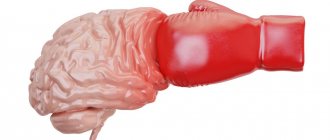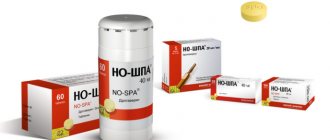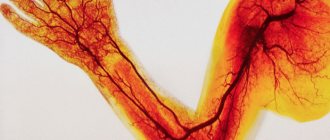Meningitis - incubation period, causes and symptoms of the disease
Meningitis is an infectious disease during the development of which the membranes of the brain and spinal cord become inflamed.
In clinical practice, this disease is most often assumed to be inflammation of the pia mater.
Meningitis, the incubation period of which lasts up to ten days, can be diagnosed in the first few days after the onset of infection, you just need to correctly identify the symptoms. It occurs as an autonomous disease, as well as as a complication of a concomitant disease.
Symptoms
All types of meningitis, including staphylococcal, have similar symptoms and differ mainly in the severity of manifestations. Basically, a person with inflammation of the meninges experiences the following symptoms:
- General weakness;
- Heat;
- Photophobia;
- Mental disorders;
- Nausea to the point of vomiting;
- Headache, aggravated by movement and due to exposure to external stimuli (light, sound, vibration, etc.);
- Increased tone of the neck muscles;
- Limitation of head movements;
- Pulsation and swelling of the fontanelle in babies;
- Pallor of the skin;
- Deterioration in concentration;
- Behavioral disorder in infants;
- Decreased appetite;
- Increased breathing and heart rate;
- The appearance of shortness of breath;
- Reducing pressure;
- Taking unusual poses;
- The appearance of abnormal involuntary reflexes;
- Increased sensitivity in the head area;
- Convulsive attacks;
- Appearance of a rash.
The appearance of several of the listed symptoms should be a signal to go to the hospital. The doctor will conduct an examination and prescribe tests to determine the presence of the disease and its cause. This is done using MRI, CT, tests and lumbar puncture to remove cerebrospinal fluid.
The course of treatment depends on the nature of the infection, as antiviral, antifungal drugs and antibiotics may be required to eliminate the bacteria. It also includes medications to improve blood flow, anti-inflammatory medications, and analgesics.
Staphylococcal, meningococcal and other types of inflammation of the meninges are dangerous to health. The course of meningitis in most cases is quite acute and the patient may remain disabled or die. This can be prevented, but to do this you will have to strengthen your immune system and avoid meeting infected people.
Reasons for appearance
Meningitis is caused by various reasons. Let's look at them:
- viruses (poliomyelitis virus, echoviruses, Coxsackie viruses, tuberculosis, HIV);
- bacteria (meningococci, pneumococci, Haemophilus influenzae);
- head injuries (bruises, concussions, skull fractures);
- allergies (medicines, external chemical irritants):
- tumors;
- fungus;
- complications after surgery;
- inflammation on the face or neck (boils);
- sickle cell anemia.
The disease can be transmitted by airborne droplets from person to person, accompany another disease, and can also be transmitted by various animals (mice, ticks).
Timely prevention can help prevent the onset of the disease. It is necessary to observe the rules of personal hygiene, monitor the health of pets, as well as the cleanliness of the food consumed (fruits, vegetables, eggs).
Staphylococcal meningitis.
One of the varieties of purulent meningitis, is an infectious disease, the causative agent is Staphylococcus aureus, which is part of the human microflora and can live quite amicably with it.
The carrier of the infection is a person, transmitted by airborne droplets, contact, household, and nutrition.
Newborns and children under 3 months are most susceptible to the disease, so the most dangerous for them are carriers of staphylococcus, including medical workers and people with skin damage caused by staphylococcus (skin dermatitis, confirmed by culture).
There are several ways of penetration of staphylococcus into the brain and spinal cord: contact, through the blood, post-traumatic. Penetration of infection into the meninges occurs when the focus is close to the brain: phlegmon of the head or face, purulent otitis, abscess (accumulation of pus in the tissues) of the brain, suppuration of epidural (hard membranes of the spinal cord) cysts, subdural hematoma (hemorrhage between the dura mater and the arachnoid shells). Infection can occur after surgery, and post-traumatic meningitis occurs after injuries to the bones of the skull and face.
One of the most severe cases is the hematogenous form of meningitis, which occurs with purulent conjunctivitis, pneumonia, enterocolitis, omphalitis (inflammation of the umbilical wound), inflammation of the skin caused by staphylococcus. If there is at least one focus of infection plus reduced immunity, circulating through the circulatory system, damage occurs to various organs and systems, including the central nervous system.
How does staphylococcal meningitis manifest in children?
- It begins acutely, meningeal symptoms quickly develop:
- Strong headache,
- Persistent vomiting
- Photophobia,
- High body temperature,
- Stiff neck.
In newborns, meningeal symptoms may be absent or incomplete, but it is necessary to monitor the child’s condition; the condition may worsen, tremor of the chin and hands, regurgitation, refusal to breastfeed, and lack of effect from treatment. A feature of staphylococcal meningitis is the formation of purulent inflammation in the brain or spinal cord.
Approximately 10 days after the onset of the disease, clearly defined purulent cavities, often multiple, are found in the meninges.
During treatment, it is difficult to eliminate the primary source of infection since staphylococcus is highly resistant to antibiotics; if at the beginning of treatment antibiotics are effective, then during treatment they become resistant and become useless.
According to doctors’ statistics, staphylococcal meningitis is one of the most unfavorable, the mortality rate is 65% and recovery is often not complete, severe disorders of the nervous system remain.
Treatment of staphylococcal meningitis in children.
- Bed rest in hospital;
- Antibiotics of two types (Kanamycin, Gentamicin) plus penicillin antibiotics (Oxacillin, Ampiox, Tseporin).
- Nitrofuran (Furagin).
- Antistaphylococcal immunoglobulin is administered intramuscularly.
- Staphylococcal bacteriophage inside when the condition improves.
- To boost immunity (Lysozyme, Lactobacterin, Bifikom, Bifidobacterin.
- Vitamins.
Prevention of staphylococcal meningitis.
- Control of sanitary and epidemiological regime in medical institutions.
- Monitoring of pregnant women.
- Timely detection of purulent-inflammatory diseases in newborns and their transfer to infectious diseases departments.
- Vaccination of pregnant women with staphylococcal toxoid.
Main symptoms of meningitis
Meningitis is difficult to recognize quickly because its symptoms are similar to those of the flu. Symptoms vary with the form of the disease. Ailments accompanying all forms of meningitis:
- heat;
- chills;
- Strong headache;
- muscle rigidity (stiffness, which may be accompanied by pain);
- joint (or muscle) pain;
- drowsiness;
- convulsions;
- skin rashes;
- gastrointestinal disorders (diarrhea, vomiting).
There are several specific signs that are also important for making an accurate diagnosis. These are Brudzinski's symptoms and Kernig's symptom (occur due to the fact that the meninges are irritated), which manifest themselves in the following:
- The top symptom is involuntary bending and pressing of the legs towards the stomach, while trying to press the patient’s head to the neck.
- The average symptom is bending of the legs at the hip and knee joints while pressing on the pubis.
- Buccal symptom - bending of the arms at the elbow joints and raising of the shoulders while pressing on the area of the face in the cheekbone area.
- Bottom symptom - When checking the Kernig sign, the other leg is bent and tucked towards the stomach.
- Kernig's sign - the patient's leg bends at an angle of 90 degrees. Then the patient tries to straighten this leg independently. With meningitis, this turns out to be impossible.
Friederichsen's waterhouse syndrome due to meningitis
Synonyms of Waterhouse-Friderichsen syndrome
. S. Friedrichsen—Waterhouse. S. Marchand—Waterhouse—Friderichsen. S. Friedrichsen—Waterhouse—Bamatter. Fulminant meningococcal sepsis. Meningococcal sepsis in children. Fulminant acute hyperergic sepsis. Adrenal apoplexy. Acute adrenal insufficiency.
Definition of Waterhouse-Friderichsen syndrome
. Very acute sepsis with so-called apoplexy or functional adrenal insufficiency.
Authors
. Waterhouse Rupert is a modern British doctor, b. in 1873 Friderichsen Carl is a modern Danish pediatrician, b. in 1886. Marchand Felix - German pathologist, Leipzig, 1846-1928. The syndrome was first described in 1901 by Ernest Gordon Graham Little. Waterhouse (1911) and Friderichsen (1918) described cases of rapid sepsis with hemorrhages in the adrenal glands. Bamatter (Geneva) found that the most common causative agent of the disease is meningococcus.
Symptomatology of Waterhouse-Friderichsen syndrome
: 1. Sudden acute onset of the disease. Initial symptoms: severe headaches: abdominal pain, severe vomiting, diarrhea, high fever, cyanosis, often followed by pallor, lack of shortness of breath (differential diagnostic sign). 2. After a few hours, petechiae and bruises appear, similar to focal cadaveric spots on the skin (vital cadaveric spots). 3. A sharp drop in blood pressure (crisis!) and collapse. 4. Coma, sometimes delirium, general convulsions. 5. Cerebrospinal fluid is usually normal or only slightly altered. 6. Young children most often get sick; at ages older than puberty, the syndrome is rare (although, according to the latest data from Jores, adults are also affected). 7. The prognosis is serious.
Etiology and pathogenesis of Waterhouse-Friderichsen syndrome
. Acute infection, most often with meningococci (acute meningococcal sepsis). Removal of adrenal tumors can cause the development of similar symptoms. Death occurs from acute functional insufficiency of the adrenal cortex, which in some cases is anatomically explained by widespread hemorrhages in the adrenal glands.
However, the fact that a similar disease can develop without anatomically detectable lesions of the adrenal glands has now led to a view of the syndrome as an adaptive disease of the adrenal cortex. As Jores points out, the question of whether severe sepsis is the primary manifestation and the adrenal glands are affected secondarily, or, conversely, whether it is secondary sepsis, has not yet been completely resolved. Most authors, however, believe that adrenal insufficiency is a secondary manifestation of the disease.
Jores distinguishes S. Waterhouse-Friderichsen itself from similar manifestations in newborns, since in the latter, more or less significant hemorrhages in the adrenal glands can often be the result of both physiological and various pathological factors.
Differential diagnosis
. Sepsis. Acute septic meningitis. Severe acute pneumonia. S. Debre-Fibiger (see). S. Henoch (see).
Forms
Meningitis is classified according to various criteria. When dividing, the following are taken into account: origin (primary, secondary), etiology (viral, bacterial), course (acute, chronic), localization (total, spinal).
Types of meningitis that determine the course of inflammatory processes are serous and purulent, which consist of:
- meningococcal meningitis;
- secondary purulent;
- serous meningitis:
- tuberculosis;
- viral.
Let's take a closer look at each type of disease.
Meningococcal meningitis
The carrier of the infectious agent is humans. Typically, this type of disease develops suddenly, accompanied by a sharp increase in temperature, severe vomiting, skin necrosis, and conjunctivitis.
A few days before the onset of the main symptoms, symptoms of ARVI and skin rashes may occur. The average duration of the course is from two to six weeks.
If the outcome is unfavorable, by the end of the first week the person experiences paralysis of the facial nerve and eye muscles, and convulsions become more frequent.
Purulent meningitis
For purulent meningitis, turbidity and swelling of the meninges of the cerebral hemispheres are typical.
In the initial stage of the disease, a person feels chills and an increase in temperature is observed.
As the disease progresses, convulsions, vomiting, stiff neck muscles, tachycardia, and herpes may occur.
The course of the disease is divided into rapid, acute or chronic forms. During the sharp development of the disease, already on the second or third day a person may fall into a coma. The acute form of the disease lasts for five (six) weeks.
This form of the disease is accompanied by various complications: hearing, vision, internal organ problems, joint problems, blood poisoning.
Meningitis is an insidious disease that is difficult to diagnose immediately, but a quick diagnosis will help to quickly cure the disease without serious consequences. How meningitis manifests itself - the first symptoms of the disease, read carefully.
Read about the first signs of meningitis in children, adolescents and adults here.
Fulminant or reactive meningitis is the most dangerous form of the disease, because without assistance a person can die within 24 hours. Follow the link https://neuro-logia.ru/zabolevaniya/meningit/reaktivnyj.html you will find detailed information about this disease.
Serous meningitis
Serous meningitis is usually caused by enterovirus or mumps. The source of these viruses is often house mice. This form is usually found in children aged 2 to 7 years. Accompanied by fever, weakness, constipation, nausea, and inflammation of the respiratory tract. Often, patients are bothered by pain in the eyes due to the appearance of congestion in them.
Tuberculous meningitis
This type of disease is more common in children.
It develops if there is a tuberculosis focus in the body. The first symptoms of the disease are general weakness, loss of appetite.
Gradually, the head begins to hurt severely, the temperature rises, consciousness may be disturbed, and convulsions appear.
Viral meningitis
Viral meningitis is accompanied by a sudden onset of fever and nausea. Over the course of two days, the intensity of headache, repeated vomiting, cough, runny nose, abdominal pain, increased sensitivity to irritants, and high fever increases. The disease may subside for several days and then return with renewed vigor.
Features of treatment of Waterhouse-Friderichsen syndrome
Endocrine disorders have a variety of clinical manifestations. The adrenal glands are organs that control many vital processes. The pathology of their work is accompanied by serious complications. One of the most dangerous diseases is Waterhouse-Friderichsen syndrome. It represents acute insufficiency of adrenal function. The problem was first described at the end of the 19th century. It is characterized by rapid development and a high risk of complications, including death. Treatment of the disease should begin as soon as possible.
Causes of pathology
The disease is a stoppage of the normal functioning of the adrenal glands. Since the hormonal substances produced by this organ control the basic vital signs of a person, Waterhouse-Friderichsen syndrome is accompanied by serious health consequences. The pathogenesis of the development of the disease is associated with hemorrhage. A hematoma that forms under the capsule of the adrenal glands compresses their working tissue, which leads to a stop in its normal functioning. This happens for the following reasons:
- Sepsis as a result of acute or fulminant infection. Most often, Waterhouse-Friderichsen syndrome is a complication of the introduction of meningococcus into the body. This pathogen provokes meningitis and other inflammatory lesions. The problem can be registered in both a child and an adult. Other infectious diseases, such as typhoid fever, scarlet fever and diphtheria, also increase the risk of developing acute adrenal insufficiency. Meningococcal lesions are recorded in more than half of the cases.
- Waterhouse-Friderichsen syndrome in children can be a consequence of intrauterine pathologies, and also develop as a result of birth trauma. Hypoxia and changes in the blood coagulation system provoke the formation of a hematoma under the adrenal capsule, which leads to its dysfunction. Extraction of the fetus by instrumental methods predisposes to the disease.
- Congenital Waterhouse-Friderichsen syndrome is a rare pathology that leads to the death of infants in the first day after birth. As a rule, the presence of anomalies in the development of the adrenal cortex manifests itself during pregnancy.
Autopsies of patients who died as a result of acute adrenal insufficiency reveal hemorrhages under the capsule and in the parenchyma of the organ in the absence of other possible causes of death. Often such findings are regarded as pathognomonic signs of meningococcal septicemia, that is, further diagnosis is not made. This is precisely why the practice of using antibiotics is associated with suspected development of Waterhouse-Friderichsen syndrome even before confirmation and isolation of the pathogen in the blood. This approach increases the patient's chances of recovery. The presence of a hematoma under the adrenal capsule in some cases is the only sign of meningococcal damage, and therefore the symptoms develop rapidly.
However, there is evidence that the pathology is only a type of sepsis. Therefore, presumably its development may be associated with the introduction into the body of other infectious agents that can provoke the development of disseminated intravascular coagulation. Such complications can be caused by the proliferation of bacteria of the genus Klebsiella, Pasteurella and Hemophilus. Gram-positive microorganisms are much less likely to lead to the development of Waterhouse-Friderichsen syndrome.
Main symptoms
Acute adrenal insufficiency is a serious condition that, without emergency assistance, leads to the death of the patient. This is due to the fact that the hormones produced by the organ control many metabolic processes and are also involved in maintaining blood pressure. When the disease develops, the following symptoms are characteristic:
- The most dangerous is Waterhouse-Friderichsen syndrome, which occurs with meningococcal infection, since the first manifestations of the disease are a complete surprise for both the patient and others. A person suddenly develops agitation, accompanied by headaches, nausea and vomiting. The temperature reaches 40–410C. Later, spatial disorientation and convulsions occur. The patient develops depression, up to loss of consciousness and coma.
- The classic manifestation of acute adrenal insufficiency is a sharp drop in blood pressure. Such a sudden onset is considered a hallmark of the disease, but makes it difficult to diagnose, since there is strictly limited time to save the patient. Hypotension provokes shock and collapse, which in the absence of medical care are fatal.
- In the intestinal form of the problem, patients complain of severe abdominal pain, constant vomiting and profuse diarrhea. This subtype of Waterhouse-Friderichsen syndrome is the most difficult from a diagnostic point of view, since many surgical pathologies have a similar clinical picture. As it progresses, abdominal signs are replaced by symptoms of damage to the cardiovascular system.
- The mixed form is characterized by variability in the clinical picture. Migraines and abdominal pain appear, patients suffer from nausea. Excitement gives way to depression, the person loses consciousness and falls into a coma.
Carrying out diagnostics
Confirmation of Waterhouse-Friderichsen syndrome is difficult because the problem progresses rapidly. In many cases, patients do not have time to be transported to a medical facility. Even if the symptoms are not so critical, doctors only have a few hours to make a diagnosis. Otherwise, there is a high probability of death of the victim. The disease is similar in symptoms to many other problems. To differentiate it, hematological tests are required, with the help of which the following abnormalities are detected:
- Increase in protective blood cells - leukocytes. They indicate the development of an acute inflammatory process.
- Disorders of the hematological coagulation system. A low concentration of platelets, cells that stop bleeding, is recorded.
- Decreased levels of electrolytes such as potassium and sodium. These changes are associated with heavy fluid loss due to vomiting, diarrhea and increased body temperature.
- Hypoglycemia is most often associated with the development of seizures in the patient. A decrease in blood sugar occurs as a result of metabolic disorders in acute insufficiency of the adrenal cortex and is aggravated by active use of the compound by muscles.
A thorough history taking is also important in diagnosing the disease. Identifying critical signs of meningococcal infection in a patient shortly before greatly simplifies the process of confirming the problem.
Treatment
Stabilization of vital signs must be done as soon as possible. This is done even before an accurate diagnosis is made, since doctors are often very limited by time frames. Intensive infusion therapy is carried out, which allows you to restore the natural level of electrolytes and also helps to increase blood pressure. All these measures are aimed at preventing the development of shock and collapse, which leads to Waterhouse-Friderichsen syndrome. Cardiac glycosides are used symptomatically and are aimed at maintaining myocardial function.
To stimulate adrenal function, therapy is carried out using glucocorticoids. Hormonal drugs are used as a replacement element and help normalize the functioning of the body. If the problem was caused by a meningococcal infection, the use of antibiotics is justified, preferably intravenous administration.
After stabilization of the patient's condition, long-term therapy will be required. First, injectable corticosteroids are used, and during outpatient treatment the person is transferred to tablet forms.
The prognosis for the disease ranges from cautious to unfavorable. This is due to the rapid deterioration of the patient’s condition and the imperfection of currently existing methods for diagnosing endocrine problems.
Prevention and general recommendations
Identification of clinical signs of acute adrenal insufficiency requires urgent hospitalization. But the provision of medical care does not always guarantee the patient’s recovery. Prevention of the disease comes down to timely treatment of diseases that can provoke its occurrence, as well as strict adherence to the doctor’s recommendations.
Reviews
Peter, 32 years old, Kazan
My daughter suddenly became ill. She began to feel nauseous and had severe migraines. We immediately went to the hospital. It turned out that this was a meningococcal infection, against which Waterhouse-Friderichsen syndrome developed. Simply put, the adrenal glands failed. The daughter spent a week in intensive care, but was miraculously saved. We are now continuing the course of treatment.
Svetlana, 27 years old, Voronezh
During pregnancy, placental abruption was diagnosed. Doctors warned that the condition was quite dangerous. The birth was premature and very difficult. Doctors said that the baby’s adrenal glands had failed due to hypoxia. He was diagnosed with Waterhouse-Friderichsen syndrome. The doctors did everything possible, but they could not save the child.
RELATED ARTICLES: Is it possible to get infected with meningitis ADT vaccination against meningitis Prevention of meningitis infection
Incubation period of meningitis in children and adults
Children - average duration is from two to ten days. You should pay attention to the child’s headache and fainting; these are the symptoms that accompany the onset of meningitis.
Newborns also experience convulsions, tilting of the head, jaundice, bulging and tension of the fontanelles (non-ossified area of the skull).
Meningitis is a disease that can have dangerous consequences, such as mental, hearing, vision, nervous system disorders, coma or death. When the first symptoms of the disease appear, you should immediately consult a neurologist (you may need to consult an ophthalmologist and phthisiatrician), without trying to recover from the disease at home.
Treatment of meningitis requires hospitalization! The further prognosis depends on the time of assistance. After treatment of the disease, a recovery period is required, which can take from several weeks to several months, depending on the consequences of the disease.
To prevent meningitis, you need to know how meningitis is transmitted and how to recognize the disease by its first signs.
Why a rash forms with meningitis and when you should see a doctor, read in this topic.
Incubation period of meningitis: duration and features
Meningitis is a disease of infectious etiology (pathogens: bacteria, viruses, protozoa, mycoplasmas, chlamydia, parasites) with different routes of transmission and varying duration of the incubation period. It is characterized by inflammatory processes affecting the membranes (soft, arachnoid) of the brain - brain, spinal cord.
The nature of the course is distinguished: fulminant (the clinical picture develops within 24 hours), acute (rapidly progressing with worsening symptoms), chronic (lasts longer than 4 weeks). Complications: toxic shock, confusion, stupor, coma, convulsive syndrome.
Definition of pathology
Meningitis of any form is contagious. Incubation period is the time period from the moment an infectious agent enters the body until the symptoms of meningitis appear. Incubation is a latent period of the disease, when the pathogen that has entered the body actively multiplies, creating a colony that can cause pathological processes. The duration of incubation depends on the number and degree of activity of the invading infectious agents.
The duration of the period is influenced by the state of the patient’s immune system. For example, pneumococci, getting on the mucous membrane of the oral cavity and upper respiratory tract, can be asymptomatically present in the body for a long time. The inflammatory process involving pneumococci develops as a result of provoking factors - hypothermia, acute respiratory diseases, influenza.
Otogenic type of disease
Otogenic meningitis is a purulent type of leptomenigititis. It occurs mainly due to bacteria that enter the brain from the ear cavity. This mainly happens due to chronic and acute otitis media. Divided into the following types:
- Primary. The infection spread from the ear cavity directly to the meninges;
- Secondary. The disease developed as a result of intracranial pathological processes (abscesses, sinus thrombosis).
With purulent otitis, microflora is sown. It is because of this that otogenic meningitis develops. It is characterized by the appearance of cerebral edema, massive discharge of pus, the development of encephalitis and an increase in the amount of cerebrospinal fluid (CSF).
Types of disease
The duration of the incubation period for meningitis varies depending on the type of pathogen, the individual characteristics of the body (the degree of activity of the immune system, the presence of chronic somatic diseases, the age of the patient) and the nature of the course. Taking into account the type of pathogen and the nature of the course, the following forms of pathology are distinguished:
- Viral. Initiated by encephalitis, mumps and herpes simplex viruses, cytomegalovirus, enteroviruses (Coxsackie, ECHO). The incubation period of viral meningitis is usually about 2-4 days.
- Bacterial. Pathology is initiated mainly by meningococci, staphylococci, pneumococci, tuberculous mycobacterium, and hemophilus influenzae. Chronic forms are characterized by damage by Borrelia (Lyme disease), Treponema pallidum (syphilis), and Leptospira (leptospirosis). The incubation period for bacterial meningitis is on average 4 days. The incubation period can vary from 2-10 days.
- Purulent. Characterized by inflammatory processes with the formation of pus. The main pathogens: streptococci, Haemophilus influenzae and Escherichia coli, pneumococci. Risk factors include injuries and surgical interventions in the head area. An analysis of the cerebrospinal fluid reveals an increased concentration of white blood cells. The incubation period of purulent meningitis often varies between 2-5 days.
- Serous. Characterized by serous changes in the cerebrospinal fluid. Analysis of the cerebrospinal fluid reveals lymphocytic pleocytosis. It develops mainly with the participation of polio viruses, mumps, enteroviruses, and less often with the participation of bacterial microflora - mycobacterium tuberculosis, treponema pallidum. It is transmitted by sneezing, coughing, touching, or shaking hands. The incubation period for serous meningitis averages about 1-18 days.
Meningitis is detected in 50% of patients diagnosed with tick-borne encephalitis. Incubation of tick-borne encephalitis lasts 1-30 days. Fungi such as Candida and cryptococci can also provoke the disease. The secondary form of the disease develops against the background of the primary focus of the infectious lesion:
- Otitis is inflammation of the inner ear.
- Sinusitis is inflammation of the paranasal sinuses.
- Tuberculosis is a source of infection in the lungs.
- Osteomyelitis is a source of infection in bone tissue.
- Pulpitis, gingivitis, periodontitis and other infectious diseases of the oral cavity.
At risk are people with diagnosed diseases - lymphoma, septic endocarditis, chronic pathological processes in the cranial paranasal sinuses, purulent processes in the chest, diabetes. This group includes patients after treatment with immunosuppressants for a long time.
Other types of meningitis
Meningitis can develop when a patient is infected with viruses. The incubation period for viral meningitis
varies from 2 to 10 days. When infected with enteroviruses, its duration can be 1-18 days, with the mumps virus - 10-18 days. The incubation period for Armstrong's choriomeningitis (acute aseptic meningitis) lasts 8-12 days.
Inflammation of the meninges occurs when infected with the following viruses:
- ECHO and Coxsackie viruses;
- Mumps;
- Herpes simplex (type II);
- Flu;
- Corey;
- Rubella.
In the prodromal period, the symptoms of viral meningitis do not differ from the signs of infectious inflammation of the meninges.
Patients are worried about headaches, malaise, and catarrhal symptoms are detected. Body temperature rises to 40°C, nausea and vomiting often occur. After 3-5 days, meningeal signs appear: rigidity of the neck and neck muscles, Kernig and Brudzinski symptoms, hyperesthesia.
If secondary serous meningitis develops against the background of mumps, the patient may have enlarged all groups of lymph nodes. A skin rash appears with viral meningitis caused by the Coxsackie virus and ECHO.
At the Yusupov Hospital, patients with viral meningitis receive complex therapy aimed at destroying the infectious agent, reducing intoxication and intracranial pressure. Doctors at the neurology clinic take an individual approach to choosing drug doses depending on the age and severity of the patient’s condition.
Pneumococcal meningitis
People with weakened immune systems are more likely to get sick, especially the elderly and young children. The disease is severe and often causes serious complications. The causative agent of the infection is pneumococcus. Microorganisms are transmitted from a sick person or bacteria carrier through airborne droplets and contact. The incubation period can last up to three days, during which time there are no symptoms of the disease.
The disease begins acutely and is manifested by the following symptoms:
- Increase in body temperature to 40°;
- General weakness;
- Increasing pain in the head;
- Increased skin sensitivity;
- Intolerance to loud noises or photophobia;
- Chills;
- Nausea, uncontrollable vomiting;
- Involuntary trembling or cramps of the limbs.
The disease is severe in young children. They experience the following symptoms:
- Signs of increased intracranial pressure;
- Swelling of the fontanel;
- Severe shortness of breath;
- Crying and moaning scream;
- Blue discoloration of the nasolabial triangle, tips of the fingers and nose;
- Frequent regurgitation or severe vomiting.
By the second or third day of the disease, stiffness of the neck muscles and meningeal symptoms appear, and complete or partial paralysis of the limbs develops.
Paralysis of the oculomotor nerves may then develop. With pneumococcal meningitis, the cerebrospinal fluid is cloudy and viscous, acquiring a greenish tint. In the cerebrospinal fluid, the content of cellular elements and protein increases, and the amount of glucose decreases. Infectious disease specialists at the Yusupov Hospital begin antibacterial therapy for pneumococcal meningitis immediately after taking cerebrospinal fluid and blood samples. Initially, empirical therapy is carried out with antibiotics to which pneumococci are most sensitive: penicillins, carbapenems, cephalosporins or vancomycin. After identifying the causative agent of the infection and determining its sensitivity to antibiotics, targeted antibacterial therapy is carried out. Doctors carry out pathogenetic and symptomatic therapy, dehydration, and immunostimulation. If a life-threatening condition develops, the patient is transferred to the intensive care unit. He is given oxygen therapy through nasal catheters or artificially ventilated using the latest expert-class ventilators.
Tuberculous meningitis
is a secondary disease that develops when a patient is infected with Koch's bacillus. Mycobacterium tuberculosis spreads hematogenously or lymphogenously to the brain from the primary foci of infection, which are located in the lungs.
At the first stage of inflammation, the choroid plexuses of the ventricles of the brain are affected by the hematogenous route. Specific granulomas are formed in them. The choroid plexus is the main source of cerebrospinal fluid production. Along with the endothelium of the meninges and capillaries, they serve as the anatomical substrate of the blood-brain barrier. At the second, liquorogenic stage of the development of tuberculous meningitis, mycobacteria from the choroid plexus with the flow of cerebrospinal fluid settle at the base of the brain. They infect the soft meninges and cause acute meningeal syndrome.
The clinical picture of tuberculous meningitis depends on the stage of development of the pathological process:
- In basilar tuberculous meningitis, meningeal syndrome and damage to the cranial nerves predominate;
- The meningoencephalitic form of tuberculous meningitis is characterized by a combination of meningeal syndrome with manifestations of focal damage to the brain substance. The patient develops speech impairment, complete or partial paralysis of one half of the body;
- In the spinal form of the disease, the substance, membranes or roots of the spinal cord are affected. In patients, movements in the lower extremities and the function of the pelvic organs are impaired.
Treatment of tuberculous meningitis is carried out by phthisiatricians, infectious disease specialists and neurologists.
Doctors carry out etiotropic therapy with drugs to which Mycobacterium tuberculosis is sensitive (pyrazinamide, isoniazid, rifampicin, ethambutol, streptomycin). The prognosis for recovery of patients treated at the initial stage of the disease is optimistic. If you have the first symptoms of meningitis that developed after the incubation period in adults, call the Yusupov Hospital. Doctors will examine the patient, quickly establish an accurate diagnosis and provide adequate therapy.
Make an appointment
Author
Ekaterina Dmitrievna Abramova
Neurologist, director of the chronic pain clinic
Characteristics of the incubation stage
The risk of infectious damage to nervous tissue increases in patients who have undergone surgery in the cranial area, surgery to bypass the ventricular system, or with a history of traumatic brain injury. The following factors play an important role in the pathogenesis of meningitis:
- Properties of the pathogen. Virulence (the degree of the pathogen’s ability to infect the body), neurotropism (the desire of the pathogen for nervous tissue).
- The reaction of the body of an infected person. Influencing factors: age, dietary habits, social and living conditions, previous injuries in the head area, immune status.
- The background on which microorganisms and macroorganisms come into contact. Influencing factors: overheating, hypothermia, insolation (exposure to sunlight).
Possible consequences
In childhood and adolescence, the consequences of meningitis can be life-threatening. The physiological structure of the child's body predisposes to the occurrence of generalized, pronounced reactions - neurotoxicosis, convulsive and encephalic syndrome. Common complications: stupor, psychomotor agitation, hyperkinesis, coma, mental disorders.
In severe cases, progressive cerebral edema develops. If the condition worsens, the likelihood of dislocation of brain structures increases, which can lead to respiratory and cardiac arrest and death. In cured children, the consequences of the illness can be expressed in the occurrence of epilepsy, inhibition of mental development, and hearing loss.
The duration of the incubation period varies significantly depending on the individual characteristics of the infected person, the type and degree of activity of the pathogen.
source
Incubation period of meningitis: symptoms of onset of the disease
Meningitis is an inflammation that affects different areas under the membrane of the brain and spinal cord. It is possible to get rid of the disease using modern methods, but it is extremely difficult to prevent its consequences. Meningitis, the incubation period of which can last from several hours to 7 days, requires an immediate response.
If you manage to start treatment immediately after symptoms are detected, then the risk of dangerous consequences for a person becomes minimal.
What is the incubation stage?
The incubation period is the period of time during which the causative agent of meningitis adapts to the body, but does not yet manifest itself as acute symptoms. The time depends on the type of pathology; in most clinical situations, the incubation stage lasts 2-7 days. Less often - from 1-2 minutes to several years.
In addition to the type of disease, the duration is influenced by factors such as age, immune status and the individual characteristics of the patient’s body. During the incubation period, viruses begin to multiply, but do not yet cause serious harm.
As soon as the number of pathological bacteria becomes critical, a person begins to get sick. If the examination was started during the incubation period, meningitis can already be detected.
Symptoms of the initial stage
There are forms of meningitis that are transmitted to humans in different ways; they differ in the duration of incubation, as well as symptoms and consequences. But all forms of the disease are characterized by common symptoms that appear at the very beginning. They are often confused with the flu. If a combination of symptoms is detected, you should consult a doctor if tick season has begun (April-September):
- the temperature rises, chills begin;
- the patient has a headache;
- drowsiness, convulsions, lethargy and fatigue occur;
- a person may suffer from disturbances in bowel movements, sleep, and skin rashes;
- Patients often experience muscle stiffness and joint pain.
Specific signs of the incubation period of meningitis in adults and children are also present. They appear due to irritation of the meninges and are called Kernig's or Brudzinski's signs.
What is staphylococcus
The genus Staphylococcus includes about 20 species. In medical practice, three are more common:
- Saprophytic (S. saprophyticus). Least dangerous. The main habitat is the flora of the female reproductive system.
- Epidermal (S. epidermidis). Has a toxic effect on the skin. Has a low infectious potential.
- Golden (S. aureus). The most dangerous infection. The bacterium lives on the epidermis, subcutaneous tissue, and mucous membranes.
Features of golden bacterium
Staphylococcus aureus is a permanent resident of the microflora of the human body. Staphylococcus received this name because of the color of the colonies. When cultured on a nutrient medium, microorganisms are painted with a golden pigment. With strong immunity, the symbiotic microflora suppresses the growth of the pathogen.
After a decrease in the body’s defenses, the microbe proliferates (reproduces), which causes various diseases. The golden bacterium is dangerous for newborns who are in the maternity hospital, because medical institutions have the highest concentration of Staphylococcus aureus.
Antibiotic resistance
Staphylococcus aureus produces a toxin that causes food poisoning, suppuration and other serious diseases of the intestines, eyes, nose, and throat. The most unpleasant feature of the microorganism is resistance to antibacterial drugs. Its high resistance is explained by the fact that some strains produce an enzyme that quickly neutralizes the drug.
Staphylococcus aureus is resistant to penicillin antibiotics (Methicillin, Benzylpenicillin).
Specific signs
Brudzinski's and Kernig's symptoms include several groups of signs:
- Top symptoms . The legs involuntarily bend and tuck towards the stomach, and the patient's head is thrown back a little.
- Average sign . The legs bend at the knees and hip joints if you press on the pubis.
- Buccal symptom. The arms are bent at the elbows, and the shoulders are raised when pressed in the cheekbone area.
- Bottom symptom . When checking for Kernig's signs, the opposite leg flexes and pulls up.
- Kernig's sign . The patient's leg takes a position at an angle of 90 degrees, but the patient cannot straighten it back on his own.
Meningococcal meningitis
Humans become the carrier of this infection. The pathology develops suddenly. In adults, the temperature rises, and vomiting occurs; necrosis of skin tissue and conjunctivitis is possible. During the incubation stage, signs of ARVI and small rashes appear on the body.
The incubation stage of infectious meningitis is 1-10 days. Most often it lasts 5-6 days. In this case, weakness is felt immediately after the penetration of pathological cells into the body. Already during the first day, headaches and dizziness occur.
Purulent meningitis
Specific signs of purulent meningitis, even in the incubation period, are herpes and tachycardia. An MRI will show darkening of the cerebral hemispheres. There is a feeling of stiffness in the neck muscles.
If the disease begins acutely, then already on the 3rd day without help the patient falls into a coma. The incubation period lasts several hours, the first sign is fatigue and pain in the back of the head. Fulminant (reactive) purulent meningitis leads to death in most cases if help is not provided within 24 hours.
Serous meningitis
It develops under the influence of an enterovirus; in rare cases, it can appear as a result of mumps. Children are most susceptible to the form. It occurs along with inflammation of the respiratory tract, the pain is localized in the eye sockets.
The incubation period of meningitis in children lasts up to 3 days. It occurs less frequently in adult patients, mainly in residents of large cities.
Tuberculous meningitis
Children suffering from tuberculosis of the lungs, blood or other tissues are more susceptible to pathology. The first signs of the incubation period are loss of appetite and general weakness. The advanced stage may be accompanied by paresis and paralysis.
If the patient is lying down, bedsores and respiratory arrest occur. The incubation period depends on the patient's condition and can vary greatly from several days to several weeks.
Viral meningitis
The disease is characterized by an acute onset and severe fever, toxicosis, and vomiting. Within 2 days, the headaches intensify so much that even the most powerful medications no longer relieve them. The temperature rises, sensitivity to sounds and light appears.
Viral meningitis is characterized by a wave-like course, when the disease either intensifies or subsides. The incubation period lasts from 2 to 4 days. The final stage of incubation is the occurrence of loss of consciousness.
Meningitis symptoms in adults incubation period – Health Center
Meningitis is an inflammation that affects different areas under the membrane of the brain and spinal cord. It is possible to get rid of the disease using modern methods, but it is extremely difficult to prevent its consequences. Meningitis, the incubation period of which can last from several hours to 7 days, requires an immediate response.
If you manage to start treatment immediately after symptoms are detected, then the risk of dangerous consequences for a person becomes minimal.
What is the incubation stage?
The incubation period is the period of time during which the causative agent of meningitis adapts to the body, but does not yet manifest itself as acute symptoms. The time depends on the type of pathology; in most clinical situations, the incubation stage lasts 2-7 days. Less often - from 1-2 minutes to several years.
In addition to the type of disease, the duration is influenced by factors such as age, immune status and the individual characteristics of the patient’s body. During the incubation period, viruses begin to multiply, but do not yet cause serious harm.
As soon as the number of pathological bacteria becomes critical, a person begins to get sick. If the examination was started during the incubation period, meningitis can already be detected.
Symptoms of the initial stage
There are forms of meningitis that are transmitted to humans in different ways; they differ in the duration of incubation, as well as symptoms and consequences.
But all forms of the disease are characterized by common symptoms that appear at the very beginning. They are often confused with the flu.
If a combination of symptoms is detected, you should consult a doctor if tick season has begun (April-September):
- the temperature rises, chills begin;
- the patient has a headache;
- drowsiness, convulsions, lethargy and fatigue occur;
- a person may suffer from disturbances in bowel movements, sleep, and skin rashes;
- Patients often experience muscle stiffness and joint pain.
Specific signs of the incubation period of meningitis in adults and children are also present. They appear due to irritation of the meninges and are called Kernig's or Brudzinski's signs.
Specific signs
Brudzinski's and Kernig's symptoms include several groups of signs:
- Top symptoms . The legs involuntarily bend and tuck towards the stomach, and the patient's head is thrown back a little.
- Average sign . The legs bend at the knees and hip joints if you press on the pubis.
- Buccal symptom. The arms are bent at the elbows, and the shoulders are raised when pressed in the cheekbone area.
- Bottom symptom . When checking for Kernig's signs, the opposite leg flexes and pulls up.
- Kernig's sign . The patient's leg takes a position at an angle of 90 degrees, but the patient cannot straighten it back on his own.
If an illness is detected in an adult or child, all family members should consult a doctor. This is necessary because some forms of meningitis are spread from person to person.
Meningococcal meningitis
Humans become the carrier of this infection. The pathology develops suddenly. In adults, the temperature rises, and vomiting occurs; necrosis of skin tissue and conjunctivitis is possible. During the incubation stage, signs of ARVI and small rashes appear on the body.
The incubation stage of infectious meningitis is 1-10 days. Most often it lasts 5-6 days. In this case, weakness is felt immediately after the penetration of pathological cells into the body. Already during the first day, headaches and dizziness occur.
Purulent meningitis
Specific signs of purulent meningitis, even in the incubation period, are herpes and tachycardia. An MRI will show darkening of the cerebral hemispheres. There is a feeling of stiffness in the neck muscles.
Purulent pathology is the most dangerous, as it can occur rapidly within 1-2 days.
If the disease begins acutely, then already on the 3rd day without help the patient falls into a coma.
The incubation period lasts several hours, the first sign is fatigue and pain in the back of the head.
Fulminant (reactive) purulent meningitis leads to death in most cases if help is not provided within 24 hours.
Serous meningitis
It develops under the influence of an enterovirus; in rare cases, it can appear as a result of mumps. Children are most susceptible to the form. It occurs along with inflammation of the respiratory tract, the pain is localized in the eye sockets.
The incubation period of meningitis in children lasts up to 3 days. It occurs less frequently in adult patients, mainly in residents of large cities.
Tuberculous meningitis
Children suffering from tuberculosis of the lungs, blood or other tissues are more susceptible to pathology. The first signs of the incubation period are loss of appetite and general weakness. The advanced stage may be accompanied by paresis and paralysis.
If the patient is lying down, bedsores and respiratory arrest occur. The incubation period depends on the patient's condition and can vary greatly from several days to several weeks.
Viral meningitis
The disease is characterized by an acute onset and severe fever, toxicosis, and vomiting. Within 2 days, the headaches intensify so much that even the most powerful medications no longer relieve them. The temperature rises, sensitivity to sounds and light appears.
Viral meningitis is characterized by a wave-like course, when the disease either intensifies or subsides. The incubation period lasts from 2 to 4 days. The final stage of incubation is the occurrence of loss of consciousness.
Incubation period in babies
If the child is unable to describe symptoms or is too young to do so, parents should look for the following signs of the onset of meningitis:
- periodic vomiting not associated with food intake;
- drowsiness and lethargy, loss of appetite;
- temperature up to 41 degrees;
- negative reaction to strong sounds and bright lights;
- in a lying position, the child throws his head back;
- swelling fontanel in infants;
- a dark red or purple rash on the legs and buttocks;
- convulsions with respiratory arrest.
The appearance of 2 or more signs should be a reason to contact the clinic.
Possible complications
Regardless of when meningitis was discovered, the risk of complications is high. Even with effective treatment of the disease itself, no one is immune from their occurrence: strabismus, loss of hearing and vision, hydrocephalus and developmental problems in children, pathologies of thinking, paralysis, epilepsy.
The mortality rate in people who have had meningitis is high, especially with the development of a reactive purulent form.
If signs of illness appear, remember that the incubation period for meningitis can last weeks or even years. If you notice the disease in time, you can minimize the risk of complications.
Source:
Incubation period of meningitis: duration and features
› Diseases
Meningitis is a disease of infectious etiology (pathogens: bacteria, viruses, protozoa, mycoplasmas, chlamydia, parasites) with different routes of transmission and varying duration of the incubation period. It is characterized by inflammatory processes affecting the membranes (soft, arachnoid) of the brain - brain, spinal cord.
The nature of the course is distinguished: fulminant (the clinical picture develops within 24 hours), acute (rapidly progressing with worsening symptoms), chronic (lasts longer than 4 weeks). Complications: toxic shock, confusion, stupor, coma, convulsive syndrome.
Definition of pathology
Meningitis of any form is contagious. Incubation period is the time period from the moment an infectious agent enters the body until the symptoms of meningitis appear.
Incubation is a latent period of the disease, when the pathogen that has entered the body actively multiplies, creating a colony that can cause pathological processes.
The duration of incubation depends on the number and degree of activity of the invading infectious agents.
The duration of the period is influenced by the state of the patient’s immune system.
For example, pneumococci, getting on the mucous membrane of the oral cavity and upper respiratory tract, can be asymptomatically present in the body for a long time.
The inflammatory process involving pneumococci develops as a result of provoking factors - hypothermia, acute respiratory diseases, influenza.
Types of disease
The duration of the incubation period for meningitis varies depending on the type of pathogen, the individual characteristics of the body (the degree of activity of the immune system, the presence of chronic somatic diseases, the age of the patient) and the nature of the course. Taking into account the type of pathogen and the nature of the course, the following forms of pathology are distinguished:
- Viral. Initiated by encephalitis, mumps and herpes simplex viruses, cytomegalovirus, enteroviruses (Coxsackie, ECHO). The incubation period of viral meningitis is usually about 2-4 days.
- Bacterial. Pathology is initiated mainly by meningococci, staphylococci, pneumococci, tuberculous mycobacterium, and hemophilus influenzae. Chronic forms are characterized by damage by Borrelia (Lyme disease), Treponema pallidum (syphilis), and Leptospira (leptospirosis). The incubation period for bacterial meningitis is on average 4 days. The incubation period can vary from 2-10 days.
- Purulent. Characterized by inflammatory processes with the formation of pus. The main pathogens: streptococci, Haemophilus influenzae and Escherichia coli, pneumococci. Risk factors include injuries and surgical interventions in the head area. An analysis of the cerebrospinal fluid reveals an increased concentration of white blood cells. The incubation period of purulent meningitis often varies between 2-5 days.
- Serous. Characterized by serous changes in the cerebrospinal fluid. Analysis of the cerebrospinal fluid reveals lymphocytic pleocytosis. It develops mainly with the participation of polio viruses, mumps, enteroviruses, and less often with the participation of bacterial microflora - mycobacterium tuberculosis, treponema pallidum. It is transmitted by sneezing, coughing, touching, or shaking hands. The incubation period for serous meningitis averages about 1-18 days.
Meningitis is detected in 50% of patients diagnosed with tick-borne encephalitis. Incubation of tick-borne encephalitis lasts 1-30 days. Fungi such as Candida and cryptococci can also provoke the disease. The secondary form of the disease develops against the background of the primary focus of the infectious lesion:
- Otitis is inflammation of the inner ear.
- Sinusitis is inflammation of the paranasal sinuses.
- Tuberculosis is a source of infection in the lungs.
- Osteomyelitis is a source of infection in bone tissue.
- Pulpitis, gingivitis, periodontitis and other infectious diseases of the oral cavity.
At risk are people with diagnosed diseases - lymphoma, septic endocarditis, chronic pathological processes in the cranial paranasal sinuses, purulent processes in the chest, diabetes. This group includes patients after treatment with immunosuppressants for a long time.
Characteristics of the incubation stage
The risk of infectious damage to nervous tissue increases in patients who have undergone surgery in the cranial area, surgery to bypass the ventricular system, or with a history of traumatic brain injury. The following factors play an important role in the pathogenesis of meningitis:
- Properties of the pathogen. Virulence (the degree of the pathogen’s ability to infect the body), neurotropism (the desire of the pathogen for nervous tissue).
- The reaction of the body of an infected person. Influencing factors: age, dietary habits, social and living conditions, previous injuries in the head area, immune status.
- The background on which microorganisms and macroorganisms come into contact. Influencing factors: overheating, hypothermia, insolation (exposure to sunlight).
Depending on how meningitis is transmitted, the length of the incubation period may vary. With oral and airborne infection, the disease often develops faster. Main routes of transmission:
- Contact and household. The infection is transmitted from a sick person by coughing, sneezing, or talking through airborne droplets. The agent enters the mucous membrane of the mouth and nasopharynx, from where it spreads throughout the body through the bloodstream. The agent is transmitted by contact if personal hygiene is not observed.
- Hematogenous. The spread of pathogens throughout the body occurs through the bloodstream. This path of development of the disease is associated with the presence of foci of inflammation in different organs, from where pathogens enter the area of the meninges through the bloodstream. When inflammation of the respiratory tract, tuberculosis, syphilis, toxoplasmosis, candidiasis, Lyme disease, and autoimmune connective tissue diseases is detected, the risk of meningitis increases.
- When using invasive medical equipment (intravenous catheters, surgical instruments).
- Placental. The infectious agent is transmitted from mother to fetus. In medical practice, this route of transmission of meningitis is rare.
- Perineural. Through layers of connective tissue.
Source: https://chinamednsk.ru/gribok/meningit-simptomy-u-vzroslyh-inkubatsionnyj-period.html
Incubation period in babies
If the child is unable to describe symptoms or is too young to do so, parents should look for the following signs of the onset of meningitis:
- periodic vomiting not associated with food intake;
- drowsiness and lethargy, loss of appetite;
- temperature up to 41 degrees;
- negative reaction to strong sounds and bright lights;
- in a lying position, the child throws his head back;
- swelling fontanel in infants;
- a dark red or purple rash on the legs and buttocks;
- convulsions with respiratory arrest.
Possible complications
Regardless of when meningitis was discovered, the risk of complications is high. Even with effective treatment of the disease itself, no one is immune from their occurrence: strabismus, loss of hearing and vision, hydrocephalus and developmental problems in children, pathologies of thinking, paralysis, epilepsy.
The mortality rate in people who have had meningitis is high, especially with the development of a reactive purulent form.
source











